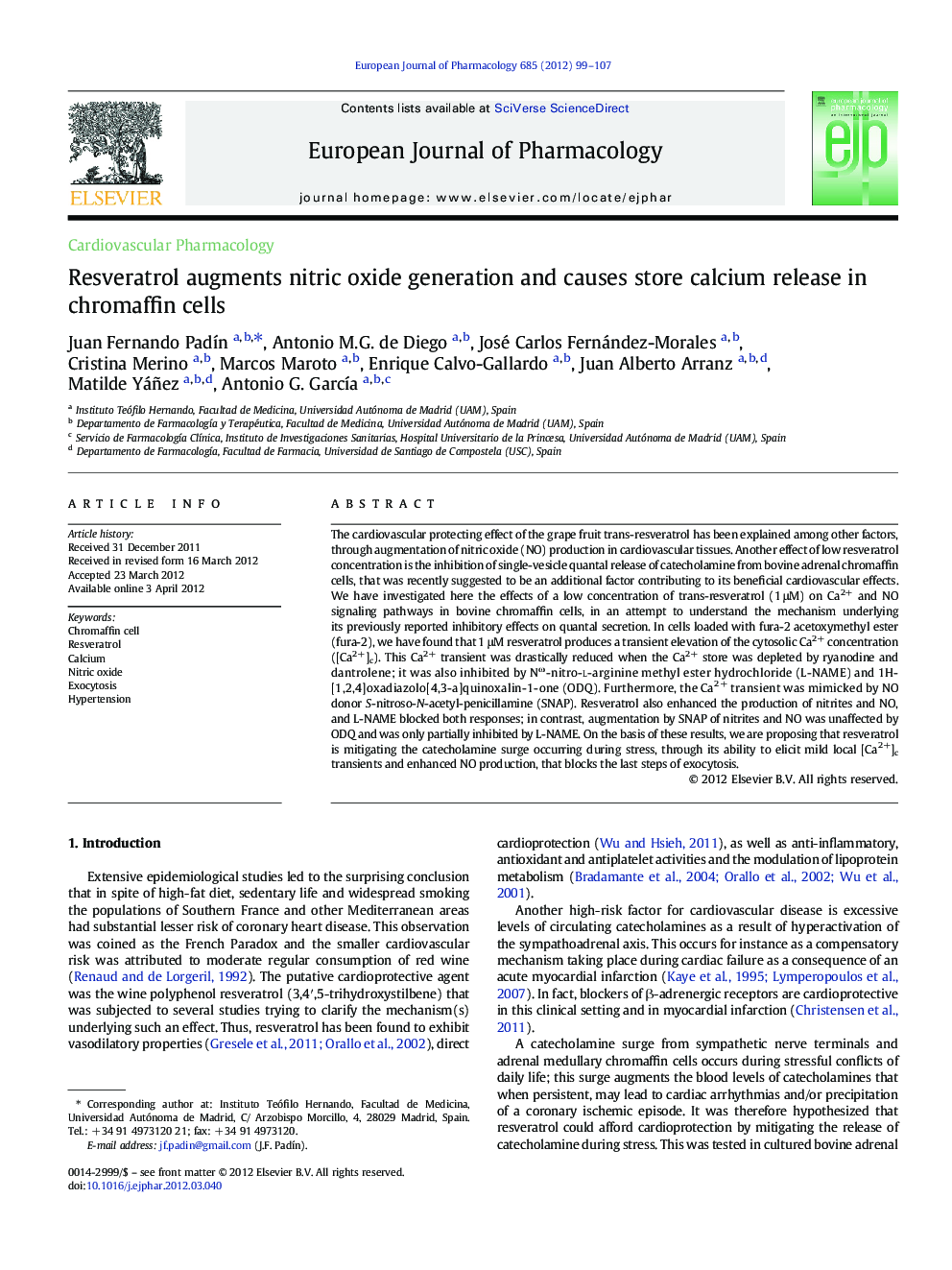| Article ID | Journal | Published Year | Pages | File Type |
|---|---|---|---|---|
| 5829489 | European Journal of Pharmacology | 2012 | 9 Pages |
Abstract
The cardiovascular protecting effect of the grape fruit trans-resveratrol has been explained among other factors, through augmentation of nitric oxide (NO) production in cardiovascular tissues. Another effect of low resveratrol concentration is the inhibition of single-vesicle quantal release of catecholamine from bovine adrenal chromaffin cells, that was recently suggested to be an additional factor contributing to its beneficial cardiovascular effects. We have investigated here the effects of a low concentration of trans-resveratrol (1 μM) on Ca2+ and NO signaling pathways in bovine chromaffin cells, in an attempt to understand the mechanism underlying its previously reported inhibitory effects on quantal secretion. In cells loaded with fura-2 acetoxymethyl ester (fura-2), we have found that 1 μM resveratrol produces a transient elevation of the cytosolic Ca2+ concentration ([Ca2+]c). This Ca2+ transient was drastically reduced when the Ca2+ store was depleted by ryanodine and dantrolene; it was also inhibited by NÏ-nitro-l-arginine methyl ester hydrochloride (L-NAME) and 1H-[1,2,4]oxadiazolo[4,3-a]quinoxalin-1-one (ODQ). Furthermore, the Ca2+ transient was mimicked by NO donor S-nitroso-N-acetyl-penicillamine (SNAP). Resveratrol also enhanced the production of nitrites and NO, and L-NAME blocked both responses; in contrast, augmentation by SNAP of nitrites and NO was unaffected by ODQ and was only partially inhibited by L-NAME. On the basis of these results, we are proposing that resveratrol is mitigating the catecholamine surge occurring during stress, through its ability to elicit mild local [Ca2+]c transients and enhanced NO production, that blocks the last steps of exocytosis.
Related Topics
Life Sciences
Neuroscience
Cellular and Molecular Neuroscience
Authors
Juan Fernando PadÃn, Antonio M.G. de Diego, José Carlos Fernández-Morales, Cristina Merino, Marcos Maroto, Enrique Calvo-Gallardo, Juan Alberto Arranz, Matilde Yáñez, Antonio G. GarcÃa,
